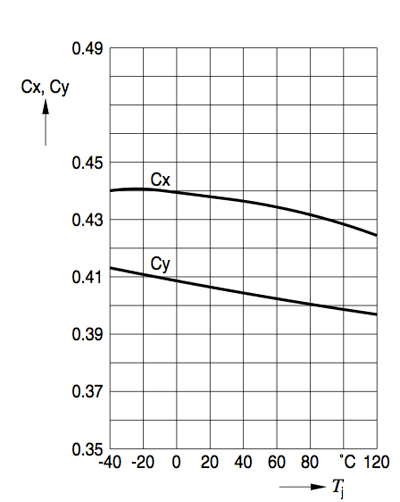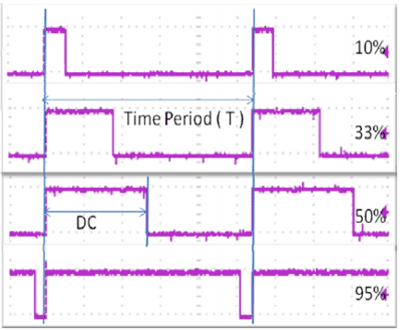Contributing Editor
LED lighting, or solid-state lighting (SSL) offers advantages in energy consumption and feature capabilities over conventional lighting sources, but requires careful attention to the capabilities and performance requirements of high-brightness LEDs. For engineers looking to explore SSL applications, an understanding of these LEDs and their operating characteristics is fundamental to taking full advantage of emerging LED lighting technologies.
LED lighting builds on conventional LED technology, typically packaging arrays of many individual LED devices onto printed-circuit boards along with power and control circuits and suitable heat sinks. For typical lighting applications, manufacturers use blue LEDs housed in a lens coated with yellow phosphor to produce light that appears white to the human eye. Lamp manufacturers combine these LED clusters with control circuitry into a variety of shapes, including E12/E14 candelabra, E26/E27 standard-household, and E39 outdoor Edison screw bases as well as MR16/GU10 bi-pin bases (Fig. 1 ).


Fig. 1: LED light bulbs are typically clusters of LEDs combined with circuitry in familiar housings for indoor fixtures such as E26/E27 standard or E12/E14 candelabra screw bases or specialized forms that retain standard base configurations such as E39 bases for outdoor lighting. The candelabra LED bulb on top is a 35 W equivalent bulb; the LED bulb on the bottom uses a specialized housing but a standard E39 screw base to serve as a 150 W equivalent bulb for outdoor lighting. (Courtesy: LEDtronics.)
LED light bulbs can provide a more natural light than conventional incandescent or fluorescent bulbs, and do so at about one-third the energy requirement of traditional lighting. While incandescent lights can provide about 1,000 hours of light, LED bulbs have a lifetime approaching 60,000 hours. The solid-state components of LED bulbs mean they are much more robust and immune to breakage from shaking or other mechanical damage than traditional incandescent bulbs with their fragile filament structures.
The light output from LEDs can be more easily directed and even tuned to different colors, offering tremendous advantages in architectural design of commercial and residential lighting. They can be packaged more densely, offering more options for mechanical design styling in applications such as automotive. What's more, their faster response time gives them distinct safety advantages for applications such as rear brake lights where fractions of a second earlier warning can translate into greater reaction time available for following drivers.
All these advantages are not without greater cost in system design requirements. One of the most critical for LED lighting applications is dissipation of the thermal energy associated with electron flow. Unlike conventional bulbs that radiate excess, non-light-productive energy as infrared energy, LEDs can only dissipate thermal energy into their heat sinks. Consequently, although LEDs are very efficient in converting one-third of input power into light, the remaining two-thirds is dissipated as heat into the heat sink. So while LED bulb housings themselves are cool to the touch, the amount of heat that must be dissipated into the heat sink can be excessive, particularly when constrained to the small area dictated by legacy bulb bases. Thermal management is critical to SSL success because increased ambient temperature not only reduces LED lifetime in the long term but also will likely result in higher LED junction temperatures, which directly affects light output (Fig. 2) and color (Fig. 3 ).

Fig. 2: Light output of an LED is directly related to junction temperature. For a white LED, an 80 degree junction temperature might result in 85% relative light intensity, for example. (Courtesy: Cree.)

Fig. 3: Color output of a white LED changes with changes in junction temperature. Here, Cx and Cy correspond to coordinates on the industry standard CIE 1931 Chromaticity Diagram, where white-appearing colors fall approximately in the range 0.3-0.4 for Cx and Cy. As Cx increases, colors tend to appear more reddish for a fixed Cy; increasing Cy at a fixed Cx appears more greenish; decreasing both Cx and Cy results in colors that appear more blueish. (Courtesy: OSRAM Opto Semiconductors GmbH.)
The requirements for control circuitry in SLL applications extend beyond related thermal management issues, directly impacting LED output characteristics. As with temperature changes, changes in driving current also results in changes in LED color output (Fig. 4 ).

Fig. 4: Color output of a white LED changes with changes in forward current. As described in the Fig. 3 caption, the Cx,Cy coordinates describe specific perceived colors. (Courtesy: OSRAM Opto Semiconductors GmbH.)
Consequently, the ability to maintain constant driving current is a fundamental requirement for LED lighting. Although a relatively simple linear voltage regulator may be sufficient for display LED applications, the need to maintain light intensity and constant color output is paramount in high-brightness LEDs used in lighting applications. For these higher powered LEDs, engineers need to apply more complex regulation techniques, typically based on the switch-mode topologies used in power supply applications.
The use of switch-mode power supply topologies offers the high conversion efficiency available with these methods. Just as important, these topologies also provide engineers with options for fine control of LED output intensity and color — as well as facilitating power factor correction (PFC) targets established in international standards and clean energy programs such as the U.S. Department of Energy (DoE) Energy Star program.
For many LED lighting applications, buck (step-down) converters can offer an ideal combination of low parts count, simplicity, and stability in the resulting circuit. Different approaches are typically needed for LED lighting designs that must drive large arrays of LEDs, particularly in low-voltage lighting applications. For these designs, the voltage drop across a long string of LEDs can exceed the supply voltage — or even sometimes fall below in cases where input voltage varies substantially over time. Engineers in these application areas can find a need to select a buck-boost (step-up/step-down) topology such as flyback, Ćuk, SEPIC or hybrid multi-stage topologies that offer differing advantages in performance, complexity, and parts count.
Switched-mode methods can also help simplify the potential challenges associated with dimming LED lights. Because light output depends on forward current, the most straightforward approach for dimming is to adjust the current through the LED or LED string. Because color output also depends on forward current, this approach, called analog dimming, is typically not practical for LED lighting applications. On the other hand, digital dimming adjusts light intensity output by modifying the duty cycle of the applied current that is being switched through the LED string (Fig. 5 ). Because the human eye integrates the intensity levels, the averaged duty cycle becomes the perceived dimming level as long as switching rate is higher than 300 Hz, which is safely above upper limits for flicker-free human vision.

Fig. 5: Engineers can dim LEDs without changing their color output by varying the duty cycle (DC) of forward current switched with a fixed time period (T). Perceived intensity follows the duty cycle, so a 10% duty cycle appears as 10% light intensity, and so on. (Courtesy: Cypress Semiconductor.)
Taken separately, the multiple considerations that play into achieving an optimum LED lighting power and control design are straightforward. The challenge in LED lighting design lies in achieving a practical balance between the myriad factors including thermal management, efficiency, dimming, light and color output, PFC, and safety. Fortunately, IC manufacturers are responding to new LED device technologies with a broad selection of LED driver solutions that provide the key capabilities mentioned above. Engineers can find suitable driver ICs optimized for LED lighting applications and tuned to work with specific classes of LEDs while addressing a range of specialized requirements. Available ICs offer switched-mode solutions ranging from charge pumps to SEPIC converters; thermal monitoring features; capabilities to help engineers meet PFC standards; and dimming control options available through a simple PWM control pin, among others. ■
Advertisement
Learn more about Electronic Products Magazine





